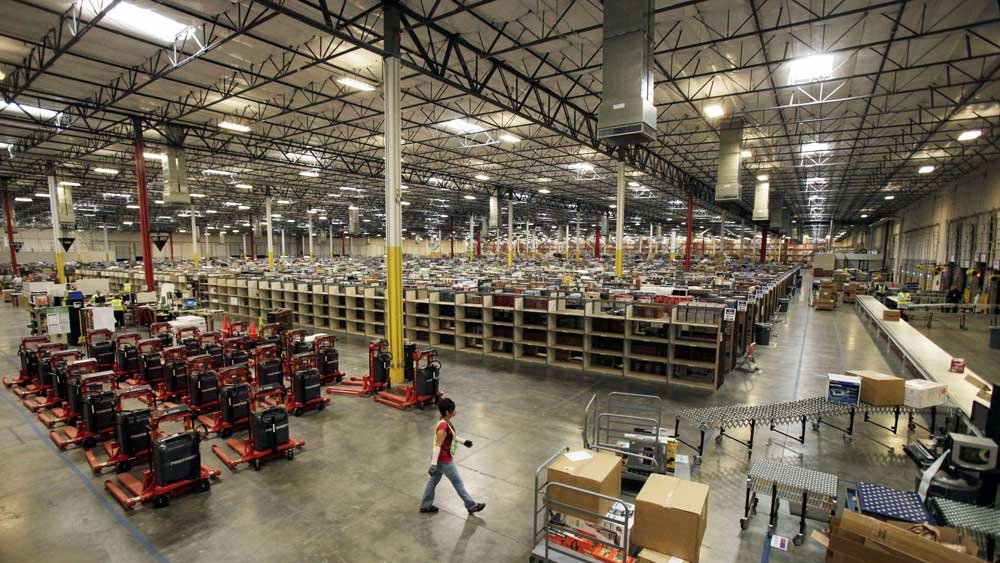For some specific industries, the existence of a city distribution center is very important because it is something that is very important for both the suppliers and the consumers.
At this point in time, there are many readers who may be wondering what kind of existence is a city distribution center? What is its significance as well as what are its benefits?
Coincidentally, what I’m about to tell you is about urban distribution centers, so what are you waiting for? Let’s read on!

What is an Urban Distribution Center?
Urban Distribution Centers (UDCs) are small logistics bases designed to store, organize and distribute goods. It is usually built in or close to a city to centralize goods from large warehouses and distribute them to nearby stores, companies or residents for quick delivery. Simply put, it is a transit station that supports the distribution of goods in the city.
Benefits of Urban Distribution Centers
Improve distribution efficiency
Urban distribution centers store goods centrally and then distribute them quickly to various places as needed, reducing the time and distance of transporting goods and making distribution faster and more efficient.
Reduce traffic congestion
By setting up distribution centers around the city, a large number of large trucks are avoided from entering the urban core, thus reducing traffic pressure and congestion problems.
Reduce environmental pollution
As the distribution center location is close to the city, the goods can be completed by short-distance transportation, reducing carbon emissions from long-distance transportation. Moreover, many urban distribution centers also use environmentally friendly transportation methods such as electric vehicles and bicycles to further reduce pollution.
Enhanced customer experience
Because urban distribution centers can be located closer to consumers, they can offer faster delivery speeds, especially for industries such as e-commerce and fresh food delivery, which can improve customer satisfaction.
Cost savings
Short-distance delivery can reduce logistics expenses such as fuel costs and driver fees, while urban distribution centers can also save on warehousing and operating costs through efficient cargo management and scheduling.
Support green logistics
Urban distribution centers can promote green logistics by adopting more environmentally friendly means of transportation (e.g., electric distribution vehicles, unmanned distribution vehicles, etc.), which is in line with the requirements of environmental protection and sustainable development in modern cities.
What industries are suitable for urban distribution centers
E-commerce:
With the popularity of online shopping, e-commerce platforms need to deliver goods to consumers quickly and accurately. Urban distribution centers can shorten the distribution distance, achieve fast and on-time last-mile delivery, and improve customer satisfaction.
Fresh food:
Fresh food needs to be kept fresh and delivered in a timely manner. Urban distribution centers can ensure food quality and reduce transit time through sorting and short-distance delivery, especially when delivering within a city, to improve efficiency.
Retail:
Large retailers, supermarket chains, etc. can use urban distribution centers for centralized scheduling of goods and then distribute them to individual stores. This reduces inventory backlogs and ensures timely replenishment of store stock.
Express and logistics:
Courier companies need to deliver packages from distribution centers to consumers, and urban distribution centers are an important part of achieving this goal. They help courier companies process orders quickly and improve overall distribution efficiency.
Food & Beverage:
Takeaway platforms and restaurants need efficient delivery systems to meet customer demand, and urban distribution centers can support centralized food and beverage distribution and just-in-time supply to ensure that meals are delivered fresh and quickly.
Pharmaceutical Industry:
Pharmaceutical distribution requires high timeliness and safety, and urban distribution centers can provide efficient warehousing and distribution services to ensure that medicines reach hospitals, pharmacies or consumers in a timely manner.
High-end goods:
For some high-end commodities that require fast delivery, such as luxury goods and electronic products, urban distribution centers provide faster and safer delivery solutions.
Key Considerations for Establishing an Urban Distribution Center
Location Selection
- Convenient Transportation
- Close to major urban roads, logistics hubs (e.g., ports, railway stations), or areas with dense customer populations to reduce transportation time.
- Example: Choosing a location near a highway exit can efficiently connect suburban areas with the city center.
- Proximity to Customers
- Optimize coverage of major distribution areas to enhance last-mile delivery efficiency.
- Example: Setting up near densely populated commercial or residential areas can reduce delivery time and costs.
- Space Requirements
- Ensure the site accommodates storage, sorting, parking, and future expansion needs.
Facility Planning
- Storage Facilities
- Provide sufficient space for storing various types of goods (e.g., fresh produce, pharmaceuticals).
- Sorting and Packaging Areas
- Design efficient sorting and packaging workflows, incorporating automation to boost efficiency.
- Loading and Unloading Zones
- Plan functional loading areas for smooth coordination between trucks and delivery vehicles.
- Environmental Facilities
- Consider features like EV charging stations and green building designs for sustainable development.
Technology Support
- Warehouse Management System (WMS)
- Track inventory, orders, and goods movement to improve efficiency.
- Delivery Management System (DMS)
- Optimize delivery routes and track vehicles in real time to ensure efficient distribution.
- Automation and Robotics
- Introduce sorting robots and automated transport equipment as needed to reduce labor costs.
Environmental and Regulatory Compliance
- Adherence to Regulations
- Ensure site selection and operations comply with local urban planning, environmental protection, and building codes.
- Minimize Environmental Impact
- Use low-emission transportation methods like electric vehicles and bicycles to reduce the carbon footprint.
- Noise Management
- Avoid generating noise pollution during nighttime operations, especially near residential areas.
Operational Management
- Flexible Inventory Management
- Adjust inventory according to seasonal or demand changes to prevent overstocking or shortages.
- Efficient Order Processing
- Establish a quick response mechanism to minimize order processing and delivery times.
- Cost Control
- Optimize space utilization, reduce energy consumption, and improve overall operational efficiency.
Safety Measures
- Goods Security
- Install surveillance equipment and access control systems to ensure safe storage of goods.
- Personnel Safety
- Provide protective gear, fire safety equipment, and regular employee training.
- Data Security
- Protect customer information and logistics data to prevent information leakage.
Customer Experience
- Quick Response
- Ensure orders are promptly picked, packed, and delivered.
- Flexible Services
- Offer multiple delivery options (e.g., scheduled delivery, next-day delivery).
- Real-Time Tracking
- Provide real-time updates on goods’ locations to enhance customer satisfaction.
Conclusion
That’s all we have to say about urban distribution centers. If you have more questions about urban distribution centers or warehouse shelving, you are welcome to contact us!
We have over twenty years of experience in manufacturing and selling warehouse shelving, and we have had a very large number of global warehousing cases, so if you’re planning to address the warehousing needs of your urban distribution center, why not come in and get a free quote and solution from us?

